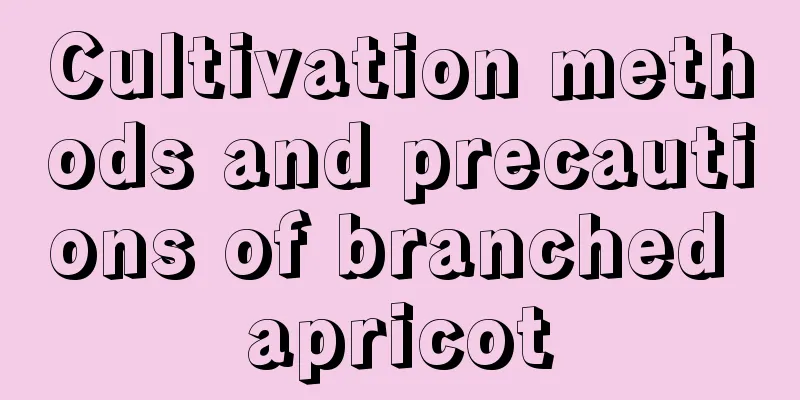Allen's breeding methods and precautions

1. Maintenance methods1. Soil: It has a strong adaptability, as long as it has good drainage and air permeability, so we usually use sandy soil when preparing the soil, and put some egg shells or broken tiles at the bottom of the flowerpot to achieve the effect of drainage and ventilation. 2. Watering: Because it has the ability to store water, we don’t have to water it frequently. Once a week is enough. It is best to water it thoroughly and avoid water accumulation due to rain. 3. Light: It will grow better in a well-lit location. We must ensure that it has sufficient light during the growing period. If it is summer, it is best to shade it from the sun to avoid being exposed to the sun. 4. Temperature: It has relatively broad temperature requirements and can grow in an environment of 5-35℃. It prefers an environment with a large temperature difference between day and night. If the temperature is too high or too low in summer and winter, it will hibernate and stop growing. 2. Breeding techniques1. Reproduction: Allen can be propagated by leaf cuttings. The method is relatively simple. You only need to pick the stronger leaves on the outside and place them on the soil. It is easy to survive. 2. Water: When the weather is good or hot, you can water more appropriately. If it is raining, you can water less or even not at all. 3. Problem diagnosis and treatment1. Blistering: If bubbles appear on the leaves of the plant, it means that it is infected with fungi. If there are only one or two leaves, we can just break off the leaves. If there are a large number, we need to use carbendazim to spray and irrigate the roots. 2. Black spot disease: Black spot disease is relatively common, and it has strong transmission and reproduction capabilities. Once discovered, timely measures must be taken, move to a ventilated location for maintenance, and use thiophanate-methyl for spraying, and persist in using the medication. IV. Other issues1. Can it be grown indoors: Allen can be grown indoors. As long as it is provided with sufficient light, its growth can be guaranteed. It can also serve as a good decoration indoors and is very cute. 2. Is it poisonous? Allen is non-toxic. It looks so cute and is harmless to humans. Flower lovers can grow it with confidence. |
<<: Breeding methods and precautions for dwarf snow wheels
>>: Cultivation methods and precautions of Hedyotis diffusa
Recommend
The pros and cons of Shakespeare 2000 Rose
Shakespeare 2000 rose is a variety bred by David ...
Why are the osmanthus leaves turning yellow and the tips withering?
The osmanthus tree is loved for its elegant shape...
What fertilizer is good for jasmine?
Overview of Jasmine Fertilization Jasmine is an u...
What to do if the coriander seedlings grow too long
What does leggy coriander seedlings look like? Wh...
How to prune the branches of the fortune tree? Tutorial on pruning small and large branches
The money tree is usually pruned in spring from A...
The main value of five-leaf brocade
1. Ornamental effect This is of course the first ...
How to prune the beauty plum
Pruning principles of plum blossoms The beauty pl...
How and when to plant lentils
Lentil planting time and month Lentils can be pla...
The most powerful thing to ward off evil spirits in a new house
1. Pixiu Pixiu is a kind of auspicious animal, wh...
How often should I water the Jasper?
How often should I water Jasper? Jadeite does not...
Reasons why camellia leaves fall off after repotting
1. Wrong time Reason: Camellia needs to be repott...
How to prune Panlonggui, pruning and shaping methods and techniques
When is the best time to prune Panlonggui Panlong...
What does chrysanthemum mean?
1. Meaning 1. Mourning: In my country, chrysanthe...
The growing environment and local conditions of bean sprouts
The growing environment and conditions of bean sp...
Succulent care tips, become a succulent expert in seconds!
Tap gently with a small hammer, and you don't...









